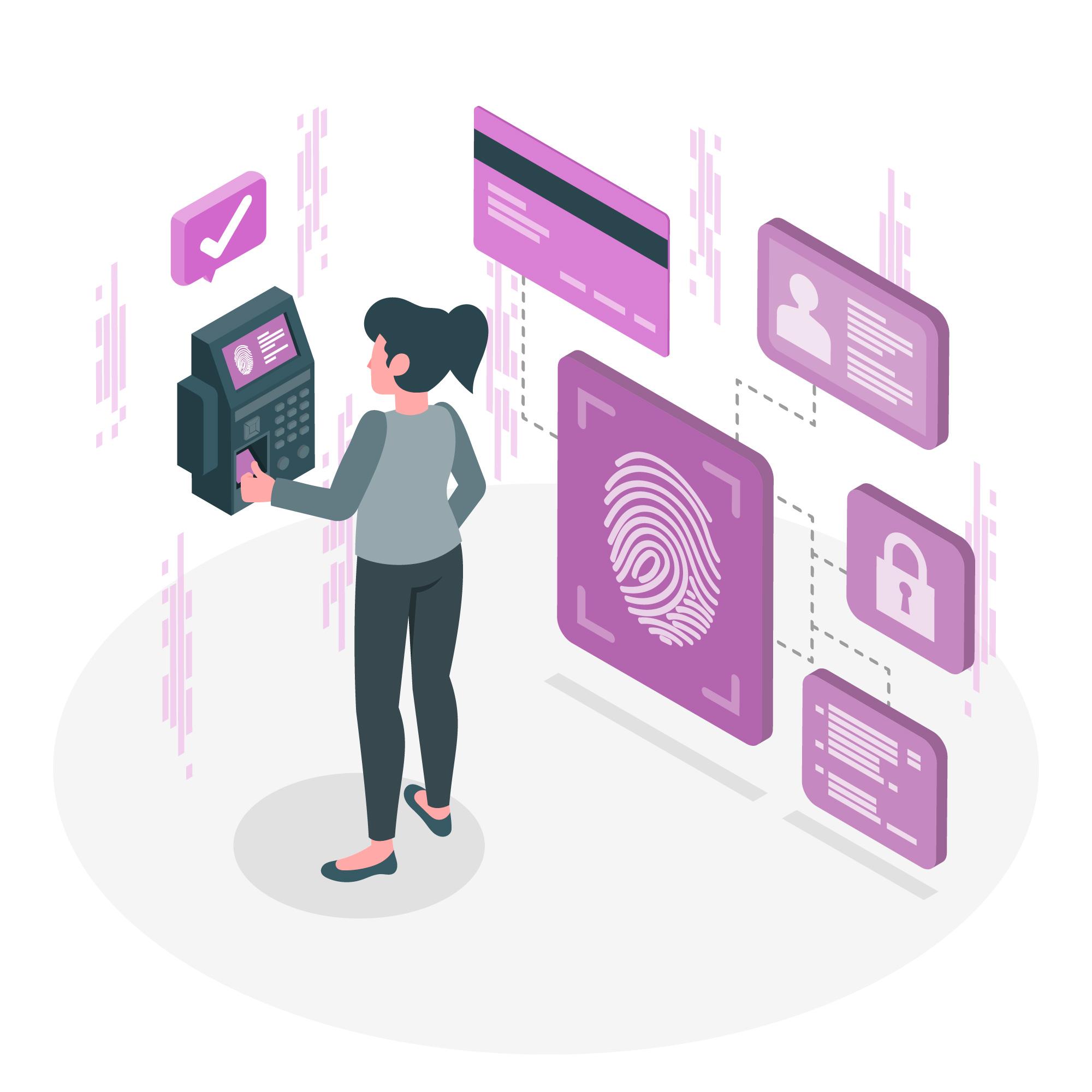Password Security and Biometrics – Compare traditional password risks against advanced biometrics like fingerprint, facial and iris recognition
In today’s digital world, protecting sensitive data and accounts has become increasingly important. Traditional password-based authentication has been the standard method of access control for decades. However, in light of numerous high-profile data breaches, password security has proven to have significant weaknesses that put users’ information at risk. This has led to growing interest in advanced biometric authentication methods like fingerprint, facial, and iris recognition as more secure alternatives.
In this blog post, we will compare the risks and limitations of password-based authentication against the benefits and capabilities of biometric authentication. We will analyze the security vulnerabilities of passwords and how biometrics aims to solve them. We will also discuss the convenience, cost, and privacy factors that come with using biometric tech for access control and identification. By the end, you will have a clear understanding of the pros and cons of both approaches.
The Inherent Weaknesses of Passwords
Passwords have long been the standard for authentication due to their simplicity and low implementation cost. Users create a secret word or phrase that acts as a key to gain access to accounts and devices. However, this approach has critical flaws:
- Passwords can be guessed, hacked, or stolen – The most common passwords are easy to predict. Brute force attacks can crack simple passwords in minutes. Phishing schemes and keylogging malware can steal credentials. Database breaches expose millions of passwords to hackers.
- Users create weak, reusable passwords – Many users create simple, easy-to-remember passwords using familiar words, names, dates or patterns. Even more reuse the same passwords across accounts, meaning one breach can compromise many services.
- People forget complex passwords – Strong passwords using random strings of letters, numbers and symbols are difficult to memorize. This leads to forgotten passwords, prompting insecure practices like writing them down.
- Passwords reveal no information about the user – Passwords by themselves provide no information about the authenticity of the person trying to access an account. This enables malicious impersonation.
- Passwords must be changed frequently – Because they can be guessed and stolen, passwords need regular refreshing. This causes frustration for users forced to create and remember new codes repeatedly.
These challenges make password-based security fundamentally vulnerable. When a password is guessed, stolen, reused or forgotten, account access is compromised and recovery can be difficult for the rightful owner.
The Promise of Biometric Authentication
Biometrics offers an elegant solution to the weaknesses of old-fashioned passwords. Biometric authentication uses unique biological traits – like fingerprints, faces, voices and eyes – to verify a person’s identity digitally. This approach provides some major advantages:
- Biometrics cannot be forgotten or lost – A person’s fingerprints, facial features and iris patterns are always with them, eliminating forgetfulness.
- Biometric traits are extremely difficult to fake or replicate – Sophisticated scanners can detect false fingerprints and masks. Matching a live face to a facial print prevents photo spoofing.
- Biometric data reveals the authenticity of the user – Scanning a fingerprint, iris pattern, or face verifies that the account owner is genuinely present, not an impersonator.
- Biometrics never change, so updating is unnecessary – Fingerprints and iris patterns remain constant throughout one’s life. Facial features change gradually with aging. Biometric data do not require regular refreshing like passwords.
- Biometrics provide immense uniqueness – Even identical twins have unique iris patterns, fingerprints and facial microscopic features. The chance of overlap is near zero, enabling highly accurate 1:1 matching.
With biometrics, the vulnerabilities of passwords fade away. Users no longer need to memorize codes or change them regularly. The risk of impersonation, theft and loss is drastically reduced. Biometric systems analyze people’s inherent bodily traits in intricate detail, making forgery virtually impossible. This results in unparalleled security and convenience for authentication and identification.
Types of Biometrics
There are many types of biometric recognition technologies, each analyzing a different biological trait. Here are some of the most common and secure biometric modalities used today:
Fingerprint Scanning
Fingerprint recognition examines the unique swirl patterns, arches, loops and ridges on the tip of a finger. Hand and finger scanners can quickly capture high-resolution fingerprint images, which software maps into mathematical representations. These mapped fingerprints are registered and stored as digital templates. For authentication, a live fingerprint is scanned and matched against the template, verifying the person’s identity. Fingerprint biometrics provide quick, reliable and inexpensive authentication for access control systems.
Facial Recognition
Facial biometrics works by capturing an image of a person’s face, then measuring and mapping the overall facial structure and key facial features. Distances between eyes, nose, mouth and jaw edges, cheekbone shape and depth, as well as eyebrow thickness can all provide distinguishing information used for matching. Facial recognition is commonly used for security purposes but also has applications in fields like law enforcement and marketing. 3D facial mapping provides even deeper analysis and more accuracy than standard 2D images.
Iris Scanning
The iris consists of the colored ring around the pupil of the eye. Iris scanning uses near-infrared illumination to take high-resolution pictures of the iris pattern, analyzing the unique crypts, furrows, rings and freckles within the iris. The complex iris texture provides an extremely reliable identifier. Iris recognition provides ultra-high accuracy in identity verification and is used for high-security applications like data centers and government facilities.
Voice Recognition
Voice or speaker recognition analyzes the sound, pitch and tone of a person’s voice against a database sample. It can analyze speech patterns and cues like pronunciation, cadence and accent for identification. Voice biometrics can be used for phone-based authentication or speech recognition and command with virtual assistants. However, voice patterns can be impacted by health and environmental factors, so voice alone is not considered the most secure biometrics modality.
Palm and Hand Geometry
Palm and hand recognition scans the shape, size and dimensions of a person’s hand for identification. Underneath-palm vascular patterns can also be imaged and mapped. Hand geometry provides a good balance of convenience and moderate security for access controls. Multimodal biometric systems often combine hand geometry with higher-assurance modalities like fingerprints for enhanced security.
Comparison of Biometrics vs. Passwords
Now that we have explored the options in biometric authentication, how do they compare to old password systems in terms of security, cost, convenience and privacy?
Security: Biometrics are vastly superior in security. Password systems are prone to breaches, hacking and fraud. Biometrics cannot be lost or stolen and replicas are nearly impossible. This makes account takeovers and impersonation extremely difficult and gives biometrics a huge security advantage.
Cost: Implementing enterprise biometric systems requires specialized scanners and software, making them more costly than password systems initially. However, the long-term costs of passwords add up when considering IT support burdens, administrative overhead for policy enforcement and user productivity losses from constantly changing passwords. Overall costs become comparable.
Convenience: Biometrics win significantly in convenience. There is nothing to memorize or carry. Authentication happens quickly and easily with a fingerprint or glance. No more password reset headaches for users or IT personnel. Users appreciate the ease while companies reduce help desk costs.
Privacy: Passwords can be seen as more private since biometrics use personal physical identifiers. However, biometric data itself is converted into digital patterns during enrollment, so the original images are not stored or shared during verification. Properly encrypted biometric credentials provide anonymity while confirming identity. Responsible system design preserves privacy.
Biometric Limitations and Considerations
While biometrics solve many of the password’s shortcomings, they have some limitations to consider:
- Implementation costs more – Specialized biometric hardware and software make upfront costs higher. Ongoing sensor maintenance and system administration add to long-term expenses.
- Technology failures can happen – Sensors can break or fail to scan properly. Systems can go offline. Backup password access is still necessary.
- Privacy concerns exist – Some worry biometrics could enable surveillance states or tracking of individuals without consent. Proper legal protections must be enforced.
- Biometrics are not secrets – Unlike passwords, compromised biometric data cannot be easily changed or revoked. But multi-factor authentication can help mitigate this risk.
- Accuracy varies by modality – Fingerprints and iris scans have almost zero false accept rates while facial, voice and hand recognition have higher error rates. Using multiple modalities together provides failover and better accuracy overall.
Despite these concerns, biometric systems offer overwhelmingly stronger security, usability and accountability when properly implemented. Ongoing technology advancements are also helping make biometrics faster, more robust and more affordable over time.
Conclusion
In closing, traditional password systems clearly have fundamental weaknesses that put sensitive personal and corporate data at risk. Billions of passwords have been compromised, yet they remain the dominant authentication method because they are simple and familiar. Biometric authentication provides a more reliable, convenient and cost-effective option for security and accountability moving forward. No authentication approach is perfect. But the pros of biometrics make them a superior choice to phase out our reliance on outdated password practices over time.




